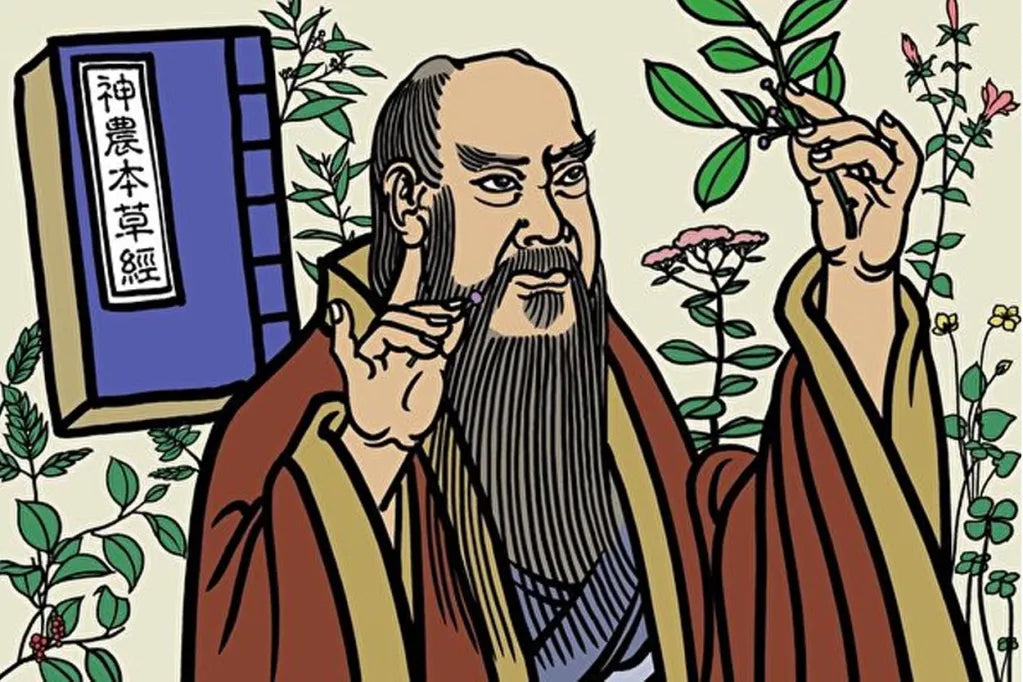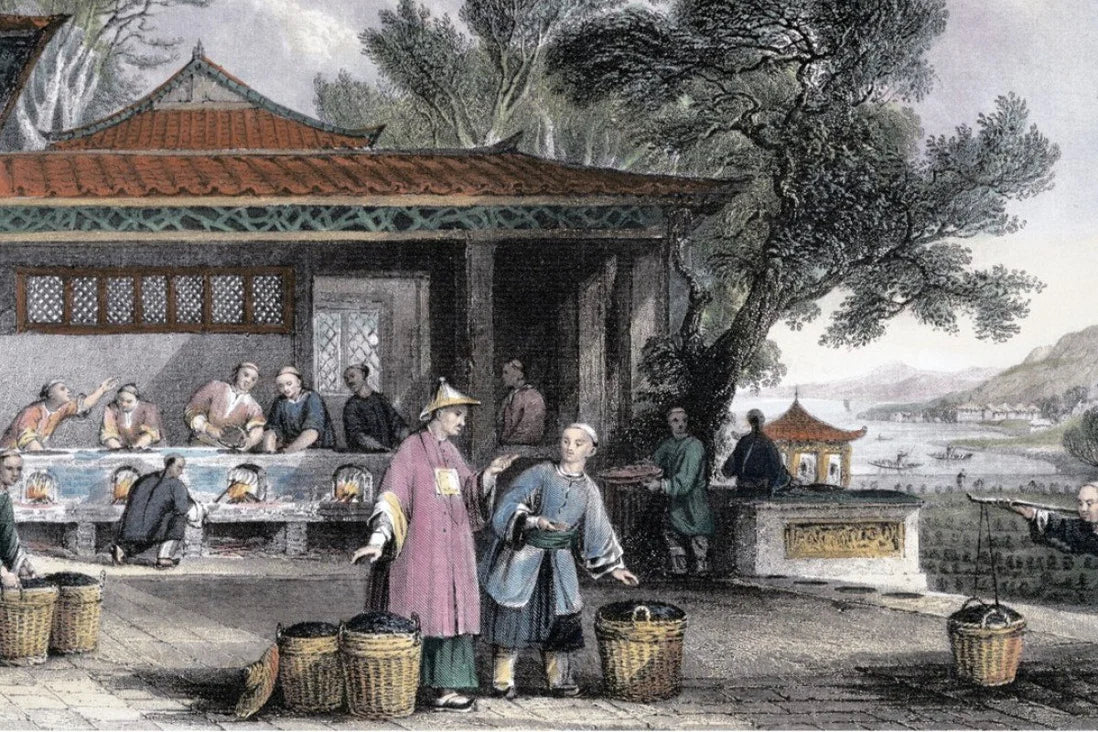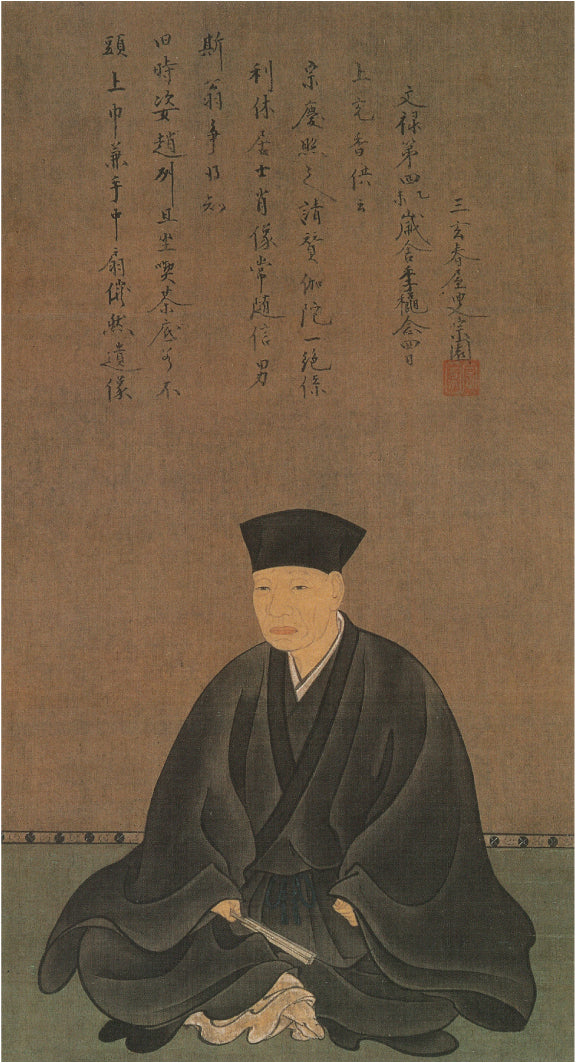
Story of Shen Nong
During a long day spent roaming the forest searching for edible grains and herbs, the weary divine farmer Shen Nong accidentally poisoned himself 72 times. But before the poisons could end his life, a leaf drifted into his mouth. He chewed on it, and it revived him, and that is how we discovered tea.
Or so an ancient legend goes.
Tea doesn't cure poisonings, but the story of Shen Nong, the mythical Chinese inventor of agriculture, highlights tea's importance to ancient China. Archaeological evidence suggests tea was first cultivated there as early as 6,000 years ago, or 1,500 years before the pharaohs built the Great Pyramids of Giza.
That original Chinese tea plant is the same type grown worldwide today, yet humans initially consumed it very differently. It was eaten as a vegetable or cooked with grain porridge. Tea only shifted from food to drink 1,500 years ago when people realized that a combination of heat and moisture could create a complex and varied taste out of the leafy green.
After hundreds of years of variations to the preparation method, the standard became to heat tea, pack it into portable cakes, grind it into powder, mix with hot water, and create a beverage called muo cha, or matcha. Matcha became so popular that a distinct Chinese tea culture emerged.
Tea was the subject of books and poetry, the favorite drink of emperors, and a medium for artists. They would draw extravagant pictures in the foam of the tea, like the espresso art you might see in coffee shops today.
In the 9th century during the Tang Dynasty, a Japanese monk brought the first tea plant to Japan. The Japanese eventually developed their unique rituals around tea, leading to the creation of the Japanese tea ceremony. And in the 14th century during the Ming Dynasty, the Chinese emperor shifted the standard from tea pressed into cakes to loose leaf tea.
At that point, China still held a virtual monopoly on the world's tea trees, making tea one of three essential Chinese export goods, along with porcelain and silk. This gave China a great deal of power and economic influence as tea drinking spread around the world. That spread began in earnest around the early 1600s when Dutch traders brought tea to Europe in large quantities.
Many credit Queen Catherine of Braganza, a Portuguese noble woman, for making tea popular with the English aristocracy when she married King Charles II in 1661. At the time, Great Britain was in the midst of expanding its colonial influence and becoming the new dominant world power. And as Great Britain grew, interest in tea spread around the world.
By 1700, tea in Europe sold for ten times the price of coffee and the plant was still only grown in China. The tea trade was so lucrative that the world's fastest sailboat, the clipper ship, was born out of intense competition between Western trading companies. All were racing to bring their tea back to Europe first to maximize their profits. At first, Britain paid for all this Chinese tea with silver.
When that proved too expensive, they suggested trading tea for another substance, opium. This triggered a public health problem within China as people became addicted to the drug. Then in 1839, a Chinese official ordered his men to destroy massive British shipments of opium as a statement against Britain's influence over China. This act triggered the First Opium War between the two nations.

Robert Fortune
Fighting raged up and down the Chinese coast until 1842 when the defeated Qing Dynasty ceded the port of Hong Kong to the British and resumed trading on unfavorable terms. The war weakened China's global standing for over a century. The British East India company also wanted to be able to grow tea themselves and further control the market.
So they commissioned botanist Robert Fortune to steal tea from China in a covert operation. He disguised himself and took a perilous journey through China's mountainous tea regions, eventually smuggling tea trees and experienced tea workers into Darjeeling, India. From there, the plant spread further still, helping drive tea's rapid growth as an everyday commodity.
Today, tea is the second most consumed beverage in the world after water, and from sugary Turkish Rize tea, to salty Tibetan butter tea, there are almost as many ways of preparing the beverage as there are cultures on the globe.
Digging Deeper
Now that you’ve watched our visual history of tea, you can look deeper at the historical context of true tea.
Our history of tea begins with the legend of the “divine farmer” Shen Nong who is credited in many ancient Chinese texts with various agricultural accomplishments.
However, some scholars of ancient China now believe Shen Nong might in fact originally have referred to a group of people, living within China and utilizing particularly advanced agricultural techniques for the era.
Over time this people’s knowledge of farming was canonized in the form of legends about a divine farmer who shared their name, and whose fame ultimately eclipsed their own.
The Classics of Tea by Lu Yu in Tang Dynasty is considered a monumental book on tea leaves even though most of the details in the book are no longer relevant today.
The book introduced fundamental structure to studying tea that to this day has a direct impact on tea scholars and connoisseurs: terroir, varietal, crafting, vessel, water, preparing, tasting, and appreciation in the text of history and art.
When tea was popularly consumed in the powdered form in Song Dynasty, the style of brewing where the tea was whisked with hot water to create a creamy drink is called dian cha (點茶).
The most desired glaze for the tea bowls was black, to contrast the appearance of tea art created with the white foam resulted from the whisking.
This style of teaware is generally referred to as jian zhan 建盏or tian mu you 天目釉, which along with the powered tea (muo cha/matcha 末茶/抹茶) and the whisking method all had a profound influence on Japanese tea drinking traditions and teaware.

Japanese Tea Ceremony and Sen no Rikyu
The Japanese further developed rituals around dian cha, standardized many of the steps, and from there had born the Japanese tea ceremony.
Sen no Rikyu is considered the most definitive figure in shaping the Japanese Tea Ceremony today. He rose from commoner to prominent social status in feudal Japan because of his outstanding skills with tea as well as his zen practices.
Eventually he was ordered to suicide by Daimyo Hideyoeshi and many hold the opinion that tea was also the reason.
In Ming Dynasty, needs for war horses and to stable boarder regions lead to large scale of government sponsored tea trade between China’s tea regions and Tibet in exchange for war horses.
These magnificent great routes are called Tea-Horse Roads. The trade continued all the way till the end of Qing Dynasty, leaving legacies of large number of ancient tea trees and once bustling townships to today’s fascination.
The first attempt to commercially plant tea in the United States started as early as 1744.
However, various attempts were not fruitful till over a century later, with the success of a sizable plantation in South Carolina in 1887.
The plantation was funded by Congress and powered by a labor force of children. The operation was once owned by The Lipton Tea Company and continued to today as the most notable tea plantation in mainland US.
Test Your Knowledge
When was tea first consumed as a beverage?
1,500 years ago
1,300 years ago
20,000 years ago
15,000 years ago
Along with tea, what are the other two essential goods China exported?
Opium and silk
Opium and porcelain
Silk and porcelain
Silk and jade
In what dynasty did the Emperor change tea making from pressed form to the loose leaves we use today?
Tang
Qing
Ming
Yuan
The British originally traded what for tea?
Gold
Opium
Wool
Silver
In what Chinese dynasty was the tea plant first transported to Japan?
Tang
Qing
Ming
Yuan
Open Ended Questions:
- Although the plant’s originated in China, tea is now enjoyed around the world. There are many words for tea in various languages resembling its names in China. What role might tea have played in globalization?
- We’ve seen how royalty and commerce changed the course of tea’s story; this is one way to conceptualize the history of the drink, what are other ways? Why is it important to consider alternative narratives?
- It was with the expanding influence of British Empire that tea became widely popular in many cultures in a short period of time. What other examples do we have of seeing a direction of cultural influence correlates with influence of power and economy?

